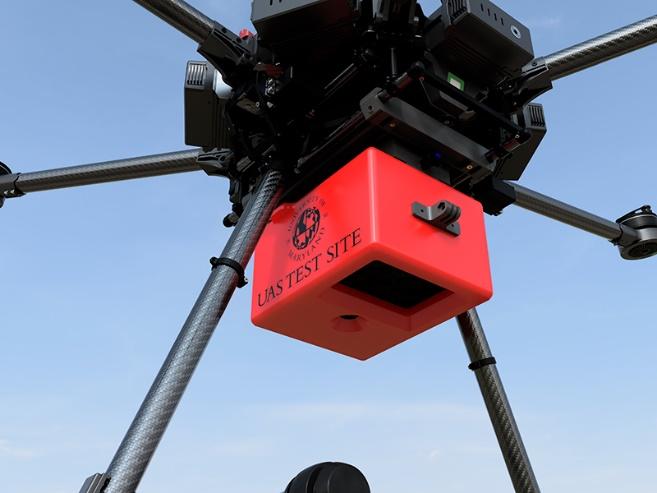Skating on Thin Ice – Better UAS Than You or Me
University of Maryland Researchers and NOAA Take Their eVTOL Out for a Test Flight

If you haven’t been to Lake Michigan, one of the U.S.’ Great Lakes, in February, you might not know what you’re missing. A pair of researchers from the University of Maryland UAS Test Site, chief pilot Darren Robey and engineer Grant Williams, would like to save you the trip. It’s cold, and it sounds eerie.

UMD UAS Test Site engineer Grant Williams (left) and chief pilot Darren Robey collaborated with NOAA sensor and data analysts to test the feasibility of drone-based validation. (Image Courtesy UMD)
The pair, working with the U.S. National Oceanic and Atmospheric Administration (NOAA) and GeoThinkTank, are working on a method to use the ice pack images taken by satellite, with images taken at surface level via drones, to validate their findings.
If the adaptations Robey and Williams have devised work as planned, the cost- and time-savings, not to mention the risk of injury or worse, will be a game-changer.
“Unmanned systems offer capabilities that just weren’t available before,” says NOAA principal investigator and scientist Sean Helfrich. “We’re hoping that by using such systems and equipping them with relatively low-priced cameras, we can get a valid estimation of what the satellite is seeing and how close that is to actual sea ice observations.”
“The integration of advanced sensors on small unmanned systems will enable a new wave of scientific capabilities and innovation that is only just beginning,” GeoThinkTank CEO, Francis Padula explains.
Information about the ice properties, such as temperature, reflectance, and how high above the water line the ice is protruding, will aid vessels in navigating around the ice.
Celsius or Fahrenheit – Cold Is Cold
NOAA had been using a six-channel multispectral camera plus an infrared camera (MCAW), all pointing in the same direction. But, batteries, don’t like extreme cold. So, test engineer, Josh Gaus, designed a 3D-printed insulation that could protect the equipment from the extreme temperatures but was also easily installed and removed using gloved hands.
With technical support from GeoThinkTank, the insulation system Gaus designed kept the batteries at about 7°C (about 45°Fahrenheit) versus the actual outside temperature which hovered between -12°Celsius and -9°Celsius (10° Fahrenheit to 15° Fahrenheit).
“Out in the cold, you don’t want to have to fiddle with fifteen tiny set screws so you can remove it in order to swap something out,” Gaus says. “We designed it so it can be removed easily by gloved hands. You just pull out a pin and the whole thing slides off the aircraft. It all stays insulated and protected.”
See the Sea Change
“Satellites provide some of our best tools for understanding how sea ice has changed over time, and much of that is based on passive microwave-based measurements, where we take the emissions in the microwave portion of the spectrum of the earth and then determine how much of that signal is changed by trying to go through ice,” Helfrich explained.
“These types of measurements do involve a level of uncertainty, however. By adding drones to the mix, we can quantify the errors. We can get a better sense of where the uncertainties lie in longer term records and make sure that current and future records are more precise.”
Want to continue to stay up-to-date about the latest developments in the eVTOL industry? Subscribe to AeroCar Journal now. It’s FREE (for a limited time)! Join us on Twitter for the latest news, analysis, and insight about the eVTOL industry. AeroCarJ


